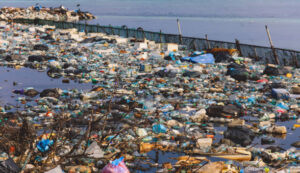The Earth’s environment is facing numerous challenges, many of which are escalating in severity and impact as the global population continues to grow and industrialization accelerates. From climate change to pollution and biodiversity loss, these environmental issues pose a significant threat to our planet’s health and well-being. In this article, we will explore 10 major current environmental problems and delve into their causes, consequences, and potential solutions.
-
Climate Change
Climate change, driven primarily by human activities, is one of the most pressing environmental issues of our time. The burning of fossil fuels, deforestation, and other industrial processes release greenhouse gases like carbon dioxide (CO2) into the atmosphere, trapping heat and causing global temperatures to rise. This phenomenon has far-reaching consequences, including more frequent and severe weather events, rising sea levels, and disruptions to ecosystems and agriculture. Mitigating climate change requires transitioning to cleaner energy sources, reducing emissions, and implementing sustainable land-use practices.
-
Air Pollution
 (Photo from iStock)
(Photo from iStock)
Air pollution, resulting from the release of pollutants into the atmosphere, poses a severe threat to public health and the environment. Emissions from vehicles, industrial facilities, and agriculture release harmful substances such as particulate matter, nitrogen oxides, sulfur dioxide, and volatile organic compounds into the air. These pollutants can lead to respiratory diseases, cardiovascular problems, and damage to the environment. Addressing air pollution involves stricter regulations on emissions, increased use of clean energy, and promoting public transportation.
-
Water Pollution
Water pollution is the contamination of water bodies like rivers, lakes, and oceans with harmful substances, including chemicals, pathogens, and nutrients. Agricultural runoff, industrial discharges, and inadequate waste management are significant contributors to water pollution. The consequences of water pollution are dire, affecting aquatic ecosystems, endangering drinking water sources, and harming human and wildlife health. To combat water pollution, we need better wastewater treatment. Consequently, sustainable farming practices, and responsible waste disposal.
-
Deforestation
 (Photo from iStock)
(Photo from iStock)
Deforestation is the deliberate removal of forests to make way for agriculture, urban development, and other activities. This practice not only leads to the loss of biodiversity but also contributes to climate change, as forests play a crucial role in sequestering carbon. Deforestation disrupts habitats, releases stored carbon into the atmosphere, and can lead to soil erosion and water quality issues. Halting deforestation necessitates sustainable land management, afforestation efforts, and the enforcement of anti-deforestation laws.
-
Biodiversity Loss
The ongoing loss of biodiversity is a global crisis that threatens the stability of ecosystems and our planet’s ability to sustain life. Factors contributing to biodiversity loss include habitat destruction, overexploitation of natural resources, pollution, and the introduction of invasive species. The consequences of this loss are profound, affecting food security, disease control, and overall ecosystem resilience. Addressing biodiversity loss involves establishing protected areas, implementing sustainable fishing and logging practices, and conserving endangered species.
-
Ocean Acidification
 (Photo from iStock)
(Photo from iStock)
Ocean acidification is a direct consequence of the increased concentration of atmospheric CO2. As the oceans absorb excess CO2, their pH levels decrease, making the water more acidic. This change has a detrimental impact on marine life, particularly organisms with calcium carbonate shells or skeletons, such as corals, mollusks, and some species of plankton. Ocean acidification disrupts marine food chains, harming fish populations and the livelihoods of coastal communities. To combat this issue, we must reduce CO2 emissions and protect vulnerable marine ecosystems.
-
Land Degradation
Land degradation refers to the deterioration of land quality, resulting from a variety of factors, including soil erosion, deforestation, and unsustainable agricultural practices. This problem reduces the productivity of land, leading to food insecurity and displacement of communities. Sustainable land management, reforestation, and responsible agriculture are vital to mitigating land degradation and preserving arable land for future generations.
-
Plastic Pollution
 (Photo from iStock)
(Photo from iStock)
The widespread use and improper disposal of plastic products have led to a global crisis of plastic pollution. Plastics do not readily biodegrade, and they persist in the environment for hundreds of years, leading to plastic waste accumulation in oceans, rivers, and landscapes. This pollution harms wildlife, disrupts ecosystems, and poses risks to human health through microplastic ingestion. Solutions to plastic pollution involve reducing plastic production and consumption, improving waste management. Furthermore, promoting the development of biodegradable alternatives.
-
Resource Depletion
Human consumption of finite natural resources, such as minerals, metals, and fossil fuels, is outpacing the Earth’s ability to regenerate them. Resource depletion not only drives environmental problems like deforestation, water pollution, and air pollution but also threatens economic stability. Specifically, transitioning to a circular economy, reducing waste, and promoting sustainable consumption can help alleviate the strain on our planet’s resources.
-
Overpopulation
 (Photo from iStock)
(Photo from iStock)
The world’s population is steadily increasing, and this demographic trend exacerbates many environmental problems. Overpopulation places greater demands on resources, leads to urban sprawl, and results in increased pollution and habitat destruction. Especially, to address this issue, we need to promote family planning, education, and equitable access to healthcare and contraception.
Solutions and Conclusion
The 10 major environmental problems discussed in this article are interlinked, and addressing them requires a coordinated effort at the individual, community, national, and global levels. Moreover, while it may be challenging to tackle these issues. It’s essential to recognize that many solutions exist, and we have the capacity to mitigate and even reverse some of the damage that has already been done.
Individual actions, such as reducing energy consumption, recycling, and supporting sustainable products and practices, can make a difference. Communities can implement local initiatives to reduce pollution, conserve resources, and protect ecosystems. Governments and international organizations must enact and enforce policies. Evidently, that encourage responsible environmental stewardship. Promote renewable energy sources, and incentivize sustainable agriculture and forestry.
In conclusion, our planet’s environmental problems are urgent and pressing, but they are not insurmountable. With concerted effort, innovation, and global cooperation, we can work towards a more sustainable and harmonious relationship with the Earth. It is our responsibility to address these challenges and protect the environment for current and future generations. Eventually, by taking action now, we can build a brighter, more sustainable future for our planet.
Reference:
Ecobin
Your little friend needs a toy, confused between what to choose?, what are you waiting for click on the link below:
How to choose right dog toy on your own




